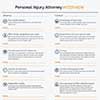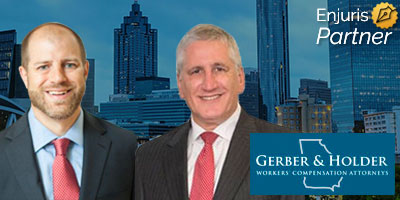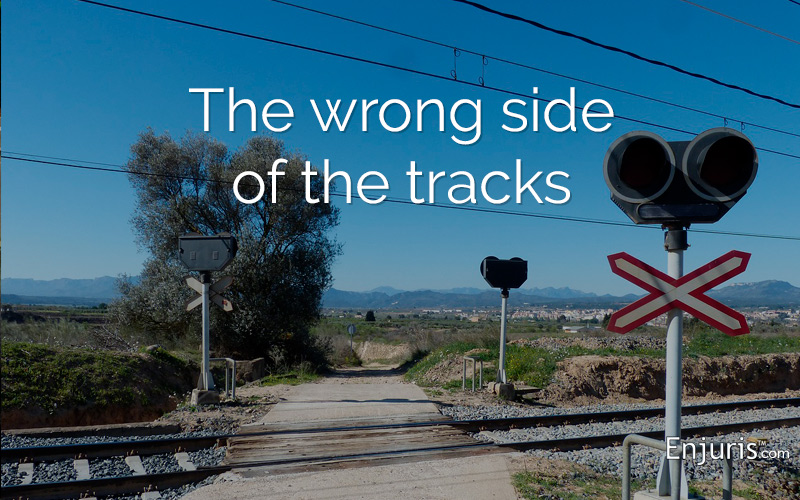Understanding railroad company liability and accident prevention
Railroad usage is a mode of transportation that continues to grow in Georgia. Though the state has had established Amtrak and cargo lines for decades, MARTA development is fairly recent and is increasing its usage and popularity.
Unfortunately, train accidents aren’t as rare as you may believe. In fact, there are approximately 300 accident per year in Georgia. Types of railroad accidents include:
- Train and car collisions
- Collisions between trains
- Pedestrian suicide and accident
- Victim/driver negligence or mistake
- Derailments
- Railway bridge or platform collapse
In any accident involving a train, fatalities or at least catastrophic injuries are almost guaranteed. In order to fully receive the proper compensation, a personal injury attorney is necessary to handle the complex proceedings.
When is the railroad liable for an accident?
As train travel is a form of mass transit, railroad companies and their employees owe a duty of “extraordinary care” to protect its passengers and bystanders at railway crossings and train stations. In a negligence or wrongful death lawsuit, the railroad company will have to prove that they did as much as possible to prevent injuring its passengers or other victims in order to avoid liability.
Common causes of train accidents where the railroad is likely to be found at fault are:
- Defects or hazards on the train tracks
- Faulty train signals, crossing gates, or lights
- Failure of the conductor to sound a horn when coming to a crossing
- Failure to balance train cargo or carrying excessive cargo
- Mechanical defects in the cars or engine
- Speeding
- Employee mistake due to inexperience or improper hiring
- Objects protruding from the train
- Violations of safety rules, regulations, or laws
- Improper maintenance of the train, tracks and related items
Though the above are some of the more common causes of train accidents, accidents that occur at the station also result in personal injury lawsuits. For example, in 2008 a woman was awarded $525,000 for her injuries at the Peachtree Station of the MARTA.
Damages received from railroad accidents
Railroad accidents are no different from any other accident in terms of what damages can be recovered. Typical damages in train accident cases include:
- Past or future medical costs
- Lost wages
- Property damage
- Pain and suffering
- Loss of consortium
- Emotional suffering
- Disability or disfigurement (catastrophic injury)
- Wrongful death
When someone is injured or killed, the parties liable to the victim or their family may include some or all of the following:
- A railroad conductor, engineer or other employee
- The railroad company
- Manufacturers of faulty train parts
- Train repairmen
Damages are divided among the various parties, with each defendant paying the amount decided by the judge.
In most cases, the railroad company’s insurance provider will try to settle with the victims. Complex paperwork is involved in these cases, and the company will be trying to lose as little money as possible. Litigation is often necessary, and only a qualified train accident attorney will be able to handle the expert witnesses, reconstructionists, and other evidentiary needs.
Claims for injured railroad workers
A personal injury attorney is also strongly encouraged for railway workers injured on the job. Railroad employees don’t receive workers compensation, but their recovery is governed by the Federal Employers’ Liability Act.
The injured employee or the victim’s family must show that the accident and accompanying injuries were directly caused by the railroad company’s negligence. As legal proceedings are typically required, an attorney is strongly encouraged to ensure that the most compensation is awarded.
6 tips for safe driving near railroad lines in Georgia
In order to prevent a train accident, a driver must be alert and listen for approaching trains. It’s never safe to cross the tracks if the arms are closing, and a driver should pause before crossing the tracks even if a train doesn’t seem to be approaching.
Operation Lifesaver, a non-profit organization for railway safety, also offers the following six safety tips:
1. A visible train is closer and traveling faster than you may think. Never try to outrace the train by speeding through the crossing.
2. Trains can’t stop quickly. Even if the engineer spots you, it may take over a mile’s worth of travel before the train comes to a stop.
3. Never drive or ride your motorcycle around lowered gates. It’s against the law and likely to have fatal consequences. If you believe the signal is broken or malfunctioning, call the emergency number posted on or near the crossing signal or the police.
4. Be careful not to get trapped on the tracks. Only attempt to cross if you think you can make the crossing without stopping on the tracks. Remember, a train is wider than the tracks by about 3 feet in both directions.
5. If your vehicle ever stalls on the tracks, exit your car and get as far away from the tracks as you can, even if a train doesn’t seem to be coming. If there is no oncoming train, look for the Emergency Notification System sign and call the contact number to tell them to be on the lookout for your vehicle. If a train is coming, run toward the train but away from the tracks at a 45 degree angle. Running in the same direction of the train may result in you getting hit by the debris from the collision of the train and your car.
6. At a multiple track crossing, don’t assume only one train is coming. After the first one passes, look and listen for a second or third locomotive.
Overall, safety is your main concern when crossing railroad tracks. It’s important to keep in mind, however, that you’re under a legal duty to act responsibly at the tracks and crossing. If you engage in risky or dangerous behavior, you’re likely to severely reduce or eliminate your financial recovery in an accident.
Georgia is a modified comparative fault state. If you’re more than 50% at fault, you can’t recover in a personal injury lawsuit. Even if a judge or jury finds your behavior less than 50%, your damages will still be reduced. For example, if you’re found to be 30% at fault but have $100,000 in medical bills and expenses, you’re only eligible to recover $70,000.
Safety tips for bicyclists and pedestrians
Railway crossings are dangerous for bicyclists and pedestrians, too. Many of the driver safety tips above should also be followed by bicyclists and pedestrians to avoid accidents. In order to prevent a tragic accident and preserve yourself from liability, Operation Lifesaver offers these additional safety tips:
- It’s illegal to cross the tracks at any location other than the crossing. You could face fines if you break this rule.
- Wet tracks are extremely slippery. It’s safer to walk your bike across the wet tracks rather than trying to bike across.
- Bicycle wheels can easily get stuck in the rails. It’s safest to cross at a 90 degree angle to avoid getting caught. If your bicycle does get stuck and can’t be pulled out quickly, leave your bike and contact the Emergency Notification System.
- Don’t use headphones when you approach the tracks or are crossing them. You need to be alert and listen for an oncoming train.
- Trespassing is illegal at railyards. You may be injured and prosecuted if caught.
Here again, your job is to protect your own safety and locate the proper authorities when necessary. If you fail to act in a safe manner, you may face catastrophic injuries and unlikely to recover damages.
Hiring a railroad accident attorney
Railroad accident litigation isn’t an easy process. Even if you decide to settle with the insurance company, a mediation or arbitration might be necessary and you would benefit from hiring a qualified attorney. To do so, browse our list of personal injury attorneys in Georgia and use our infographic to help decide which attorney is right for you.

Worksheet with questions to ask a personal injury attorney to help determine if he or she will be a good fit for your case
Download in PDF format
See our guide Choosing a personal injury attorney.


